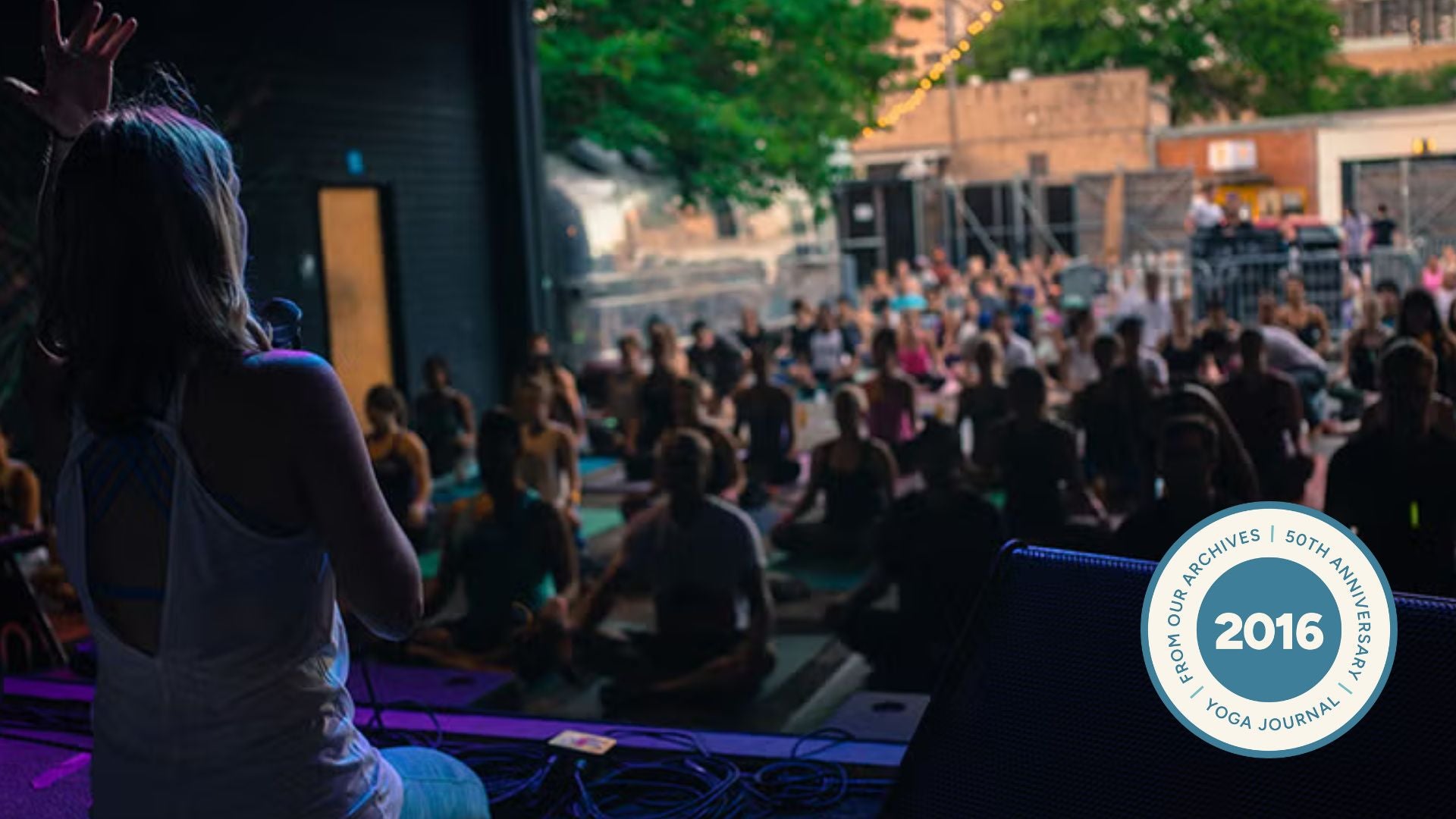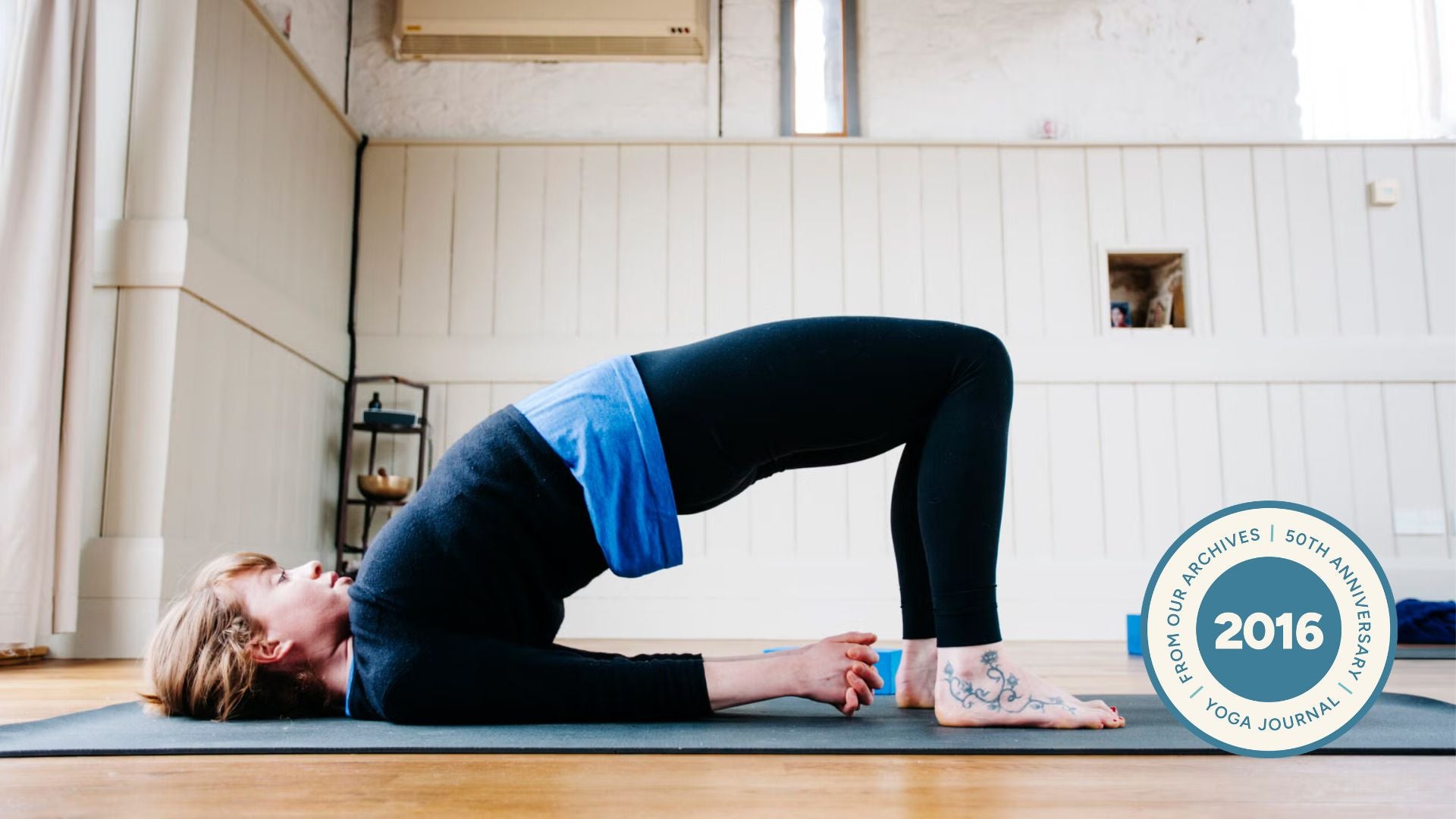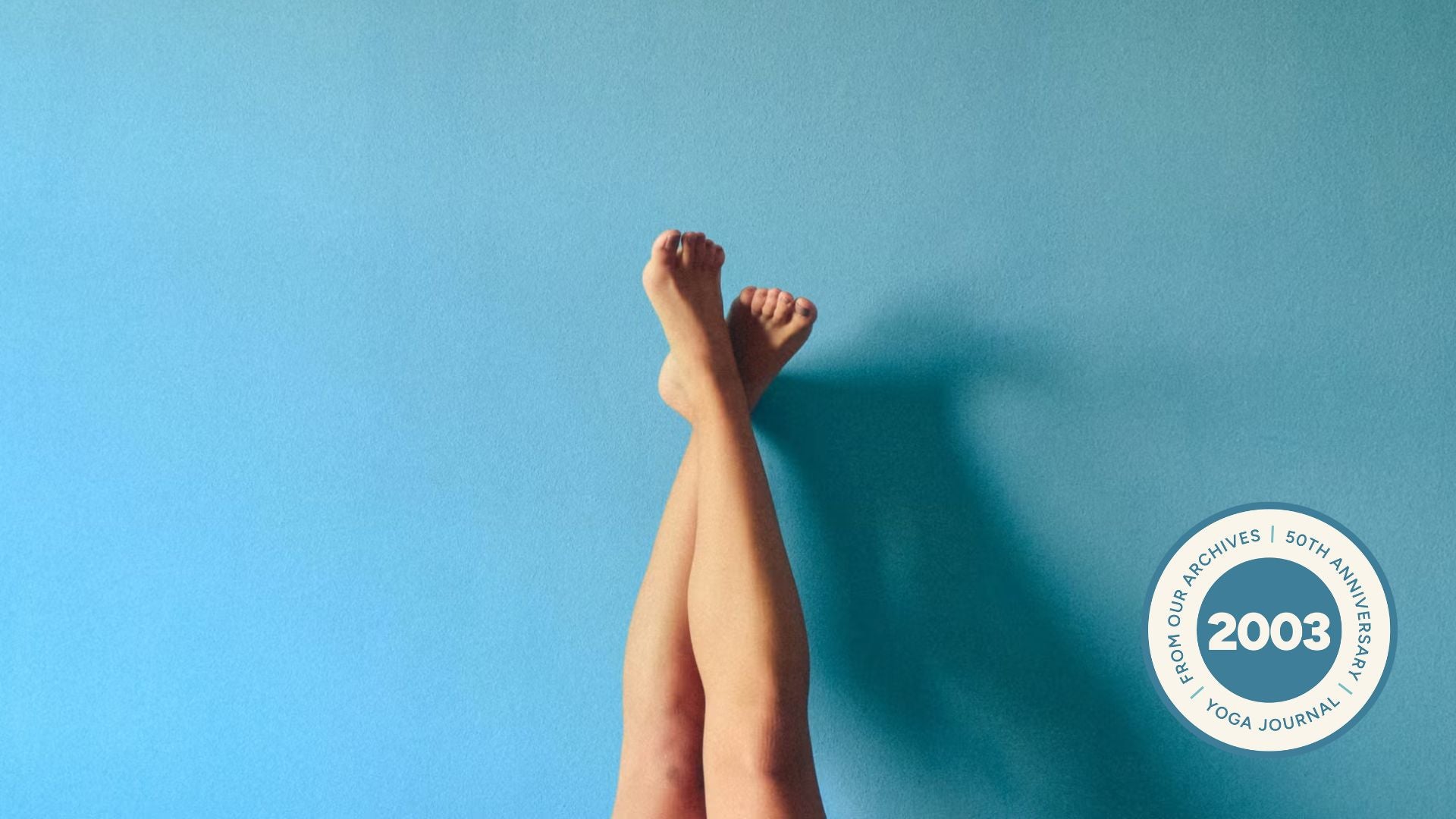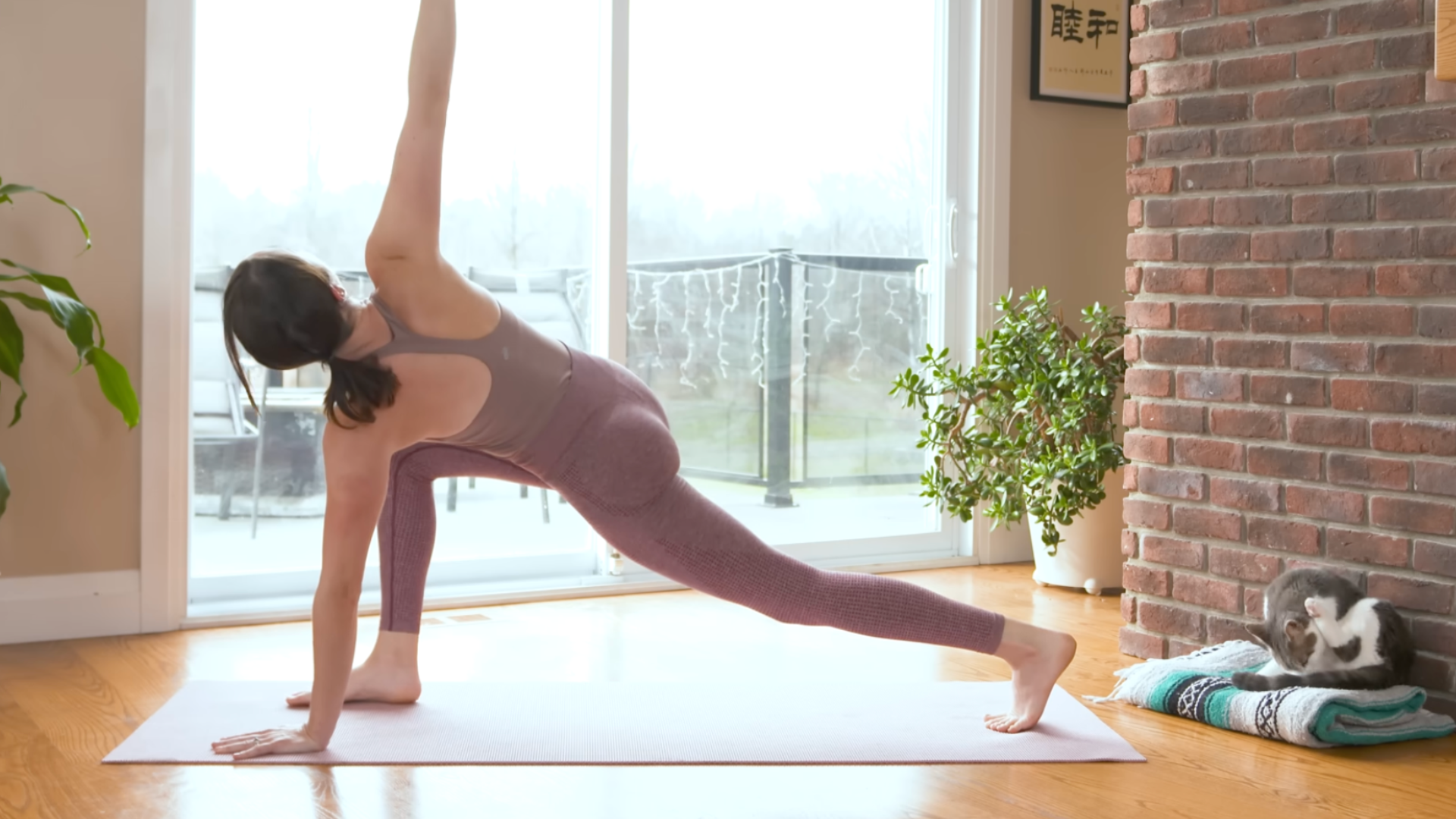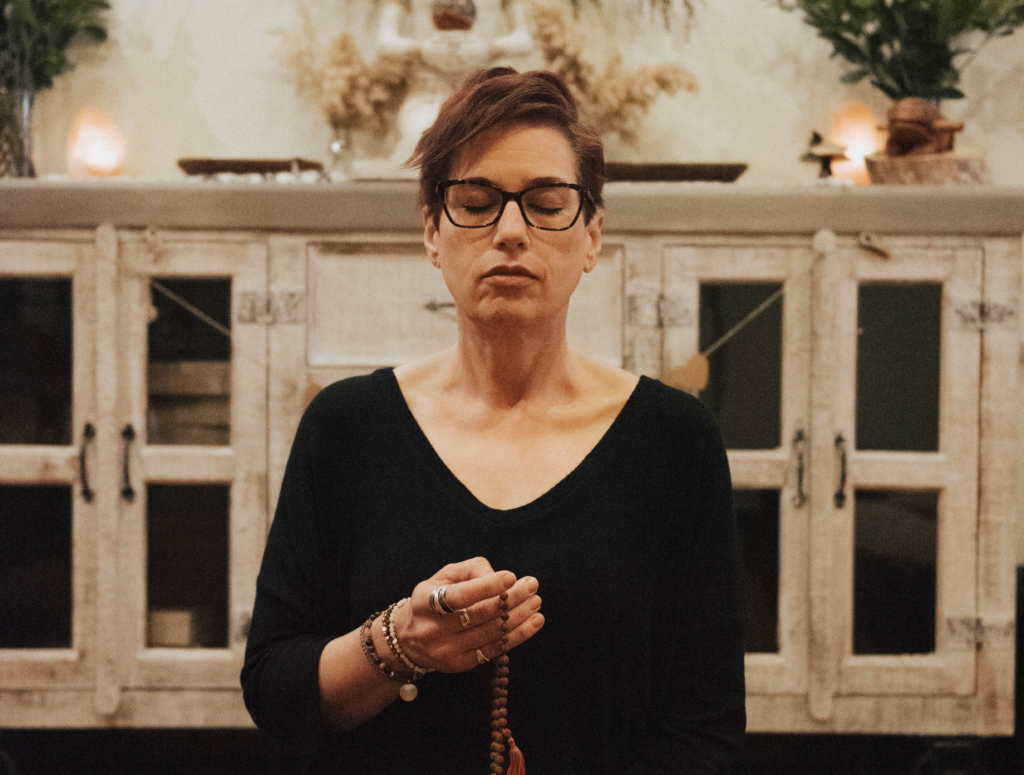“], “filter”: { “nextExceptions”: “img, blockquote, div”, “nextContainsExceptions”: “img, blockquote, a.btn, a.o-button”} }”>
Heading out the door? Read this article on the new Outside+ app available now on iOS devices for members!
>”,”name”:”in-content-cta”,”type”:”link”}}”>Download the app.
“Poetry is what happens when your mind stops working, and for a moment, all you can do is feel.” That’s what the contemporary poet Atticus once wrote. It’s not unlike what happens during yoga—not only your experience in the actual poses but the transitions in between them.
Well, some yoga transitions.
I have what could be called a complicated relationship with coming into the yin yoga pose known as Cat Pulling Its Tail. For years, I have felt anything but poetic as I clumsily attempt to shape shift my way into anything resembling it—and unfailingly managed to lose all notion of left and right in so doing.
If you know the pose, you understand what I mean. Cat Pulling Its Tail asks that you lean onto one side, extend one leg straight ahead of you, bend the other behind you, lean back in a twist, maybe even lie back on the mat and reach for each foot with your opposite hand—and somehow not forget to breathe. Mostly I quietly laugh and mentally plead with the gods of yoga to help me somehow understand which body part is supposed to be where.
I eventually learned how to find some resemblance of the shape, thanks to a heck of a lot of practice and a remarkably patient yin teacher. But it was always accompanied by considerable effort. Yin yoga teaches us to endure discomfort. Yet I couldn’t help but think maybe it shouldn’t be THAT difficult.
Accidentally Coming Into Cat Pulling Its Tail
I wasn’t intending to tackle the pose at 10:03 pm on a Monday night but there I was, scrolling Instagram for a slower-paced practice, when I landed on a late-night live with Tamika Caston-Miller, a longtime yoga teacher and founder of the virtual Ashé Yoga Collective Studio & School. Her mesmerizingly slow style always reduces me to a puddle of calm. That night was no different.
By the time Caston-Miller was midway through the practice, she eased the pace even more and let us linger, yin style, in Sphinx Pose. Then she asked us to bend our right knee and slide it toward our right elbow in what’s commonly dubbed Half Frog in yin. I eased into the lovely tension releaser without thinking.
From there, she coaxed us into rolling onto our left upper arm and reaching our left arm across the mat in a riff on Thread the Needle sometimes known as Crushed Wing. That was elegant, I thought sleepily.
That’s when it happened. As Caston-Miller suggested we rest our left hand on our right knee, I quietly laughed. Even from my yin-induced stupor, something about where she was taking us felt familiar—minus the usual struggle.
The thing is, yin yoga isn’t fixated on transitions or specific alignment. There’s actually zero emphasis on how you happen to make your way from one pose to the next. Instead, the focus is entirely on your experience in the pose—the balance of tension and release, the stillness, the length of time endured.
Yet Caston-Miller had quietly and gracefully transitioned us into the convoluted shape of Cat Pulling Its Tail with relative ease, minus any fuss or fanfare, while offering accessible options along the way. It not only seemed simple, it felt intuitive. It was a lot like the difference between printing letters and writing in cursive. Except rather than simply connecting isolated shapes, I felt as if one letter was drawing me into the next. Poetry.
How to Transition Into Cat Pulling Its Tail
Caston-Miller came up with this transition while playing around on her mat. As she explains, she likes to feel into what the body wants to be “doing biomechanically when moving from one position to another.” She’s not wrong with her quietly elegant transition and encouraging words along the way. The following cues are mostly from Caston-Miller’s class that night. See how they feel.
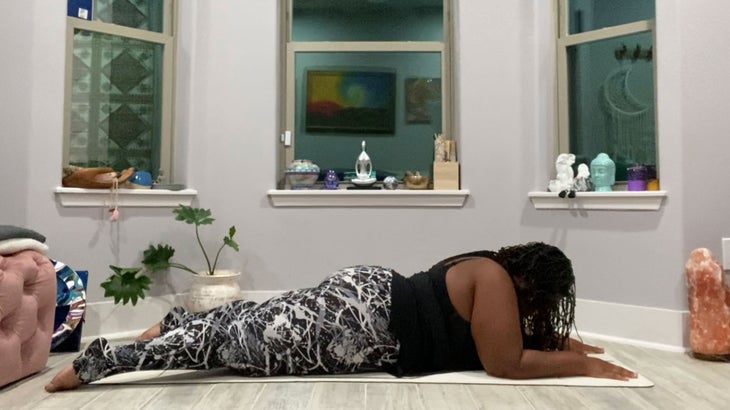
1. Come into Sphinx Pose by lying on your belly, propping yourself on your forearms, elbows beneath or slightly in front of your shoulders, and taking your feet hip-distance apart or wider. Relax your hands and let your body sink into the mat.
2. Bend your right knee and draw it toward your right elbow in Half Frog.
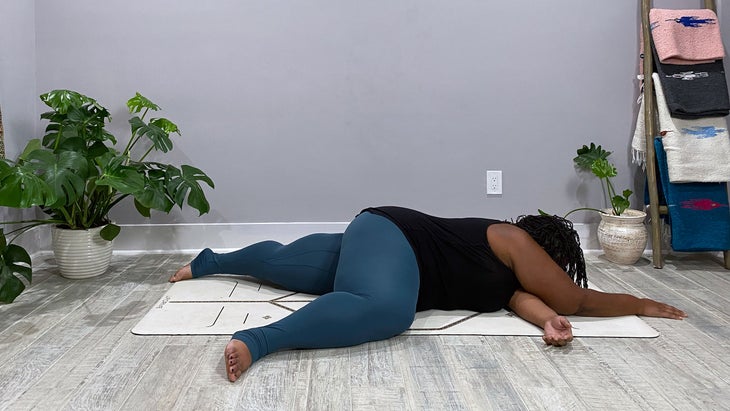
3. Thread your left arm under your right as if you were coming into Thread the Needle, reaching your left hand beneath your right arm as you reach toward the right side of the mat. Turn your left palm upward. 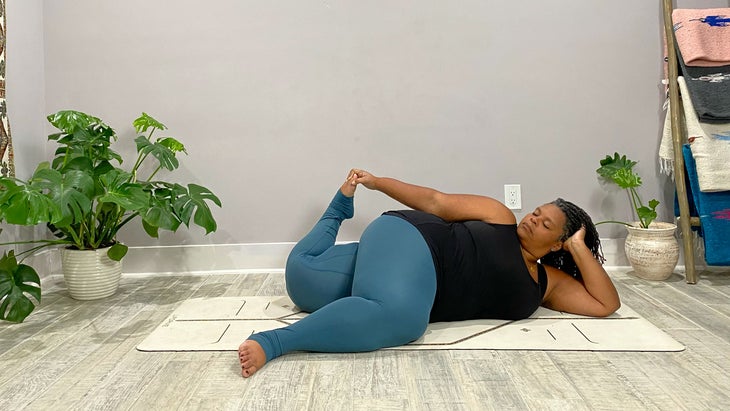
4. Prop yourself onto your left forearm. Reach your right hand behind you as you bend your left knee and reach for your left foot or, if your foot feels far away, don’t do it. You always have a choice. You can also use a strap to reach your left foot behind you.
5. Stay here or you can choose to lean back and lower your right shoulder blade to the mat in a twist with your chest facing the ceiling but your hips remaining stacked.
6. If your back is on the mat, rest your left hand on your right thigh, palm facing down. Stay here or straighten your right leg and reach your left hand for your shin, outer edge of your foot, or big toe, which yoga teacher Neeti Narula demonstrates below.
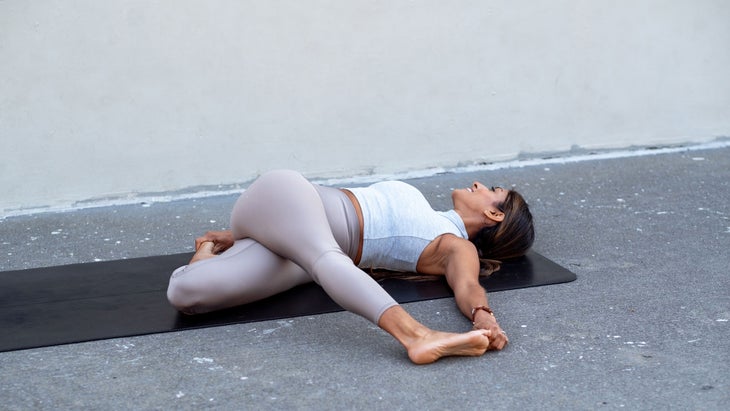
6. Whichever variation of the pose you are in, release any tension in your muscles—easier said than done—as you linger here for 90 seconds or longer. Notice if you’re holding your breath. Remind yourself to exhale.
7. Slowly unwind by reversing what you just did and coming back into Sphinx. Stay here or sink your hips back into Child’s Pose. Take your time and do Cat Pulling Its Tail again on your other side, starting with bending your left knee out to the side. Don’t be surprised if it feels different on the second side. Think less. Feel more.

